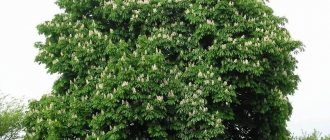Nuts are a group of different fruits consisting of a dry woody shell (shell) and an edible kernel (seed) enclosed in it. In everyday life and trade, the most common nuts include: peanuts (groundnuts), walnuts, hazelnuts, hazelnuts, pine nuts, almonds and pistachios.
Nuts are a versatile and healthy product. Even in ancient times, ancient tribes used nuts to suppress strong feelings of hunger. This fruit is truly rich in vitamins and mineral trace elements that fill the body with missing substances. Each nut fruit is in a hard shell, which protects the edible part of the nut from various damages.
Peanut
Or groundnut. It is actually a legume, but is still considered a nut. This is the most commonly consumed variety.
Groundnuts came from Latin America, where they are still a staple dish. Cheap, not at all picky to grow, distributed throughout the world, peanuts have a pleasant taste. It can be eaten raw or roasted.
The fruit increases blood clotting, normalizes cholesterol levels, quickly restores strength and improves sleep, increases potency and helps improve the functioning of the gastrointestinal tract, preserves beauty and slimness.
"Astakhovsky"
Grows up to 10 meters
First fruits for 6 years
Harvest in mid-September
Productivity 10-20 kg
Fruits up to 27 grams
This variety was developed relatively recently. The nut grows up to 10 meters in height. Seedlings of the varietal plant are able to tolerate low temperatures well. It begins to bear fruit 6 years after it is planted. The tree begins to bloom in early May, and will bear fruit in September. The type of this royal nut is optimally distinguished by such qualities as early ripening, winter hardiness and disease resistance.
Walnut
This type was probably the most popular in the Soviet Union. It grows in large quantities in the Caucasus, where it is used as a seasoning, a base for jam, or simply eaten fresh. And the birthplace of the walnut is not considered to be Greece at all, but Central Asia.
The bitter and peculiar fruits are excellent for treating anemia and developing the brain. Because of this property, walnuts become very useful for older and younger people. It is often recommended for pregnant women.
Walnut perfectly helps normalize sleep and cope with stress, normalizes blood pressure and effectively cleanses blood vessels, improves immunity and protects against all kinds of infections, prolongs youth and improves health.
Description of the species
Walnut tree (lat. Juglans regia) is a species of tree that is part of the genus Walnut (lat. Juglans) of the Walnut family (lat. Juglandaceae). It also has other names: Volosh nut, royal, Greek, Wallachian. Central Asia is considered the birthplace of the plant.
A seedling planted 50-70 years ago can reach up to 30 m, while the trunk is up to 1.5 m in diameter. The bark is painted in a dark gray shade, quite thick with deep cracks. The tap root goes to a depth of 3-3.5 m, but in trees older than 10 years, numerous horizontal root appendages are formed, giving life to lateral shoots.
The dense crown has a tent-like shape, forming a very dense shadow underneath. Thick curved branches are covered with long odd-pinnate petiolate leaves of complex shape, painted dark green. Each leaf has 7-11 oval pointed lobes, each 8-12 cm long.
In the last ten days of April, the buds burst on the tree and unisexual flowers appear along with the foliage. Staminate inflorescences look like pale green, freely hanging catkins. Pistillate inflorescences are formed close to the ends of the shoots and in the axils of the leaf petioles; they are sessile and have fused perianths. Pollination is cross pollination, mainly by wind. Walnuts do not require a pair to bear fruit successfully, but when pollinators are nearby, an increase in harvest volume is noted.
Walnuts (false drupes) ripen in the first half of autumn. The green fruit has a shell enclosed in a juicy green fibrous pericarp, which bursts when ripe, throwing the ripe nut out. The edible kernel of two halves is enclosed in a very hard shell, which has thin partitions inside. The weight of a walnut, including shells, ranges from 6-15 g, with the kernel accounting for 40-68%. Nut size – up to 5-6 cm in diameter
For the first time, a tree grown from a nut blooms 7-9 years after planting, but it will bear fruit only at 10-12 years, and reaches final maturity at 20 years. Typically, the fruiting period is 150-200 years. On average, a wild walnut lives up to 400-500 years. The oldest known tree is 2000 years old. Productivity depends on the variety. The most productive walnut variety among those commonly cultivated is “Bukovinsky - 2”, yielding up to 50 kg from 1 tree.
Pine nuts
A gift of Siberian nature. The nuts are particularly soft and delicate in taste. They perfectly complement any dish, for which they are valued by professional chefs.
Cedar pine kernels contain the maximum amount of amino acids and microelements; they are also rich in vitamins. Nuts are great for kids and older people.
Cedar seeds will help the full functioning of the brain, prevent dementia and develop memory. With their help, metabolic processes are normalized and the nervous system is restored, blood vessels and the heart are cleansed.
Pine nuts have a beneficial effect on the blood, increase hemoglobin levels, fight caries and joint diseases, improve immunity and help protect against cancer.
Planting and care
Walnuts are classified as heat-loving plants that require large amounts of sunlight for full growth and fruiting. The planting site is chosen on a slightly elevated sunny area with loose fertile soil, leaving 8 m between seedlings, and 10-12 m from nearby buildings. The optimal time for planting is the second half of April.
The land for planting walnuts is prepared in the fall. Dig a planting hole and mix the excavated soil with peat, humus, wood ash, and dolomite flour. Add 50 g of superphosphate. Planting holes are dug to a depth of 80-100 cm, and then filled back with refined soil and watered abundantly. In the spring in April, they are dug up again and a 15-20 cm layer of fine gravel or expanded clay is poured onto the bottom for drainage. A pole is driven into the bottom of the hole to secure a seedling 2 m high, since the tree grows quite quickly. The roots are sprinkled with fertile soil, the root collar is left 2-3 cm above the ground level. Water immediately, and the soil around the trunk is mulched with sawdust.
To successfully grow a walnut, a roller is erected from the soil around its trunk at a distance of about 50 cm, which does not allow water to spread after watering. For growth and fruiting, the plant requires a lot of moisture during the growing season. Mature trees draw it out from great depths, and young trees require watering every week (10-20 liters each).
Fertilizing is carried out twice a year. In the spring it is necessary to apply ammonium nitrate or superphosphate to increase green mass. In the fall, ammonium salts and calcium chloride are added for successful wintering; this is required even for frost-resistant walnut varieties - Chandler or Canadian.
Formative pruning is carried out on young trees in the fall to obtain a low-growing, spreading crown. To do this, in the first year after planting, only 3 main skeletal branches are left, and later, during the autumn pruning of the walnut, shoots directed vertically upward and thickening the crown are removed. In the spring, branches that have dried out during the winter and are broken are cut out. The root shoots of old trees are cut out or used for propagation. To protect against infection by diseases, all cuts must be coated with garden varnish.
Cashew
These nuts have also found their use in cooking. They are low in fat, but the level of fiber and carbohydrates exceeds that of walnuts.
An interesting fact is that the nuts themselves grow on a completely edible “apple”, which our compatriots are unlikely to be able to try. This fruit is very tender and vulnerable.
But the cashews themselves are fully protected. Between the shell and the nucleolus there is a very toxic substance. Therefore, only specially trained people peel nuts.
Cashews have a beneficial effect on the heart and blood vessels, increase immunity, improve digestion, and fight cancer.
Variety "Ideal"
Grows up to 5 meters
First fruits for 2 years
Peak harvest from year 5
Productivity up to 120 kg
Fruits up to 12 grams
Lifespan up to 50 years
The fruits of this tree are early ripening. This type of nut bears fruit starting from the fourth or fifth year from the moment the seed is sown. A tree more than twelve years old produces up to one hundred and twenty kilograms of fruit, the weight of the kernel reaches 12 grams. As you know, all nuts are light-loving and this one is no exception. This species loves plenty of light and does not tolerate excessively wet soil. When planting the future “Ideal” walnut tree, it is important to take into account its powerful root system at the time of completion of formation.
Coconut
The only nut of the palm family and the only one that has milk inside. Both the nut itself and its juice are distinguished by their ability to quench hunger and thirst.
Coconut pulp quickly restores strength and lifts your spirits. This nut has proven itself well for intestinal disorders; it helps restore vision and normalize cholesterol levels, prevents premature aging and improves the appearance and condition of the skin.
Peanut butter
A refractory golden-yellow oil is obtained from fresh pecan fruits (by cold pressing). This product has a characteristic nutty taste with a subtle hint of vanilla. Considering that pecan oil is a concentrate of beneficial substances, it is actively used for cosmetic purposes for the production of anti-aging compositions for the face, nourishing compositions for nails, moisturizing hair masks and massage emulsions for the body.
In addition, nut squeeze is used to treat sunburn, irritation, fungal infections, bruises, and insect bites.
Pecan Butter Recipes:
- Mask for aging and dry skin. Ingredients: 10 ml carrot juice, 8 g starch, 3 ml liquid honey, 3 ml rose water, 2 ml pecan oil, 2 drops geranium ether, chicken yolk. After mixing the components, the mixture is applied in a thin layer to the face and neck. After 20 minutes, wash off the mask with warm water and then cold. With regular use of the composition, the severity of facial wrinkles decreases, skin turgor increases, and complexion improves.
- Nail strengthener. To create a healing mixture you will need pecan oil (10 ml), volatile esters of lemon (2 drops) and ylang-ylang (1 drop). This product is rubbed into the nail plate and cuticle at least 2 times a day.
- Emulsion for thin and brittle hair. Ingredients include 10 ml pecan butter, 10 ml honey, 1 chicken egg (beaten). The emulsion is rubbed into the scalp after thorough washing. After 20 minutes, the mixture is washed off with warm water and lemon juice. If this procedure is performed weekly, the hair acquires additional volume, shine and softness.
- Nourishing concentrate for hands. Mix 15 ml of fatty oils: pecan, almond, peanut and peach. After this, combine the mixture with melted glycerin (10 ml), onion juice (5 ml) and orange ether (3 drops). The oil composition is applied to moistened skin of the hands, thoroughly massaging the periungual bed. This mixture effectively nourishes the dermis, protecting it from premature aging.
- Tanning product. Active ingredients: pecan oil (100 ml), carrot esters (20 drops) and tangerine esters (10 drops). The last ingredient can be replaced with nerol or bergamot. These substances are combined and mixed thoroughly. To naturally activate the protective pigment, the mixture is applied to a clean, damp cover 10-12 hours before sunbathing (preferably in the evening).
In addition, pecan oil is used to heal damaged skin, eliminate peeling, and reduce the intensity of inflammatory reactions. The healing concentrate is applied to the affected areas of the skin 2-3 times a day.
Macadamia
New nuts for Russians. The macadamia tree bears fruit for about a hundred years, but the fruits themselves ripen for a very long time; it takes almost seven months to get a ripe nut.
Macadamia strengthens the walls of blood vessels well, helps improve brain function, effectively restores strength, and improves skin condition.
Magic fruit
Miracle fruit, or sweet berries, are very strange berries native to West Africa. What makes these fruits strange? The fruits contain large quantities of the sugar substitute miraculin in combination with glycoprotein. The fruit itself does not have a very sweet taste, but after a person eats it, the glycoprotein binds to the taste buds located on the human tongue and turns the taste of any product into sweet within about an hour. This way you can eat a whole lemon and it will taste like sweet syrup.
In the 70s, attempts were made to commercially sell the fruit as a dietary product, since it can transform any food into sweetness, without affecting the amount of calories consumed. However, it was not possible to achieve success in this field.
Almond
The fruits of the almond tree are actively used in cooking. Sweet almonds are usually eaten, while bitter almonds are used more for cooking. They are consumed raw and roasted, in the form of whole fruits, flakes or flour.
Almonds are excellent at combating sleep problems and stress, restoring performance, helping to cleanse blood vessels and restore normal blood counts.
Application
Pecans are eaten raw or roasted (roasting enhances the vanilla flavor) over medium heat.
It is added to fish and meat dishes, coffee, and sweets. Used in the preparation of bakery products. Goes great with mushrooms, cheese, rice, rolled oats, vegetables and fruits.
Alcohol tinctures of the nut have a general strengthening effect.
Pecan in cooking
There are many recipes for making products with the addition of pecans: muffins with peaches, bananas, pig ears cookies, pies with pears, pumpkin, apples. The baked goods acquire an amazing vanilla flavor, are stored for a long time, and do not lose freshness.
Salad recipe:
Persimmon (2 pcs.), hot smoked trout (300 g), cut half an onion into pieces, add 50 g of chopped pecans, mix. Top with lemon juice to taste and garnish with persimmon slices. If you cut avocado into this salad, you don’t need sauce.
In cosmetology
Regular consumption of pecans means fresh skin, shiny eyes, strong hair, and nails. The body receives the necessary vitamins and microelements so that the reflection in the mirror is always pleasing.
Based on Cariya kernels, scrubs and masks are made at home to maintain beauty on the outside.
Scrubs gently cleanse the skin and do not injure it due to the fats contained in the nut.
Here's one recipe. Mix half a glass of black currants, 1 tbsp. a spoonful of flour with a teaspoon of chopped nuts, add cream. The result is that the facial skin is cleansed and the pallor has disappeared. This scrub is suitable for the most sensitive skin.
Masks with pecans and cosmetic clay, dairy products, and fruits are used for the face and hair.
Pecan oil is considered the most famous cosmetic product containing Cariya.
Pistachios
Often called “lucky nuts” because of the shells that resemble a smile. The pistachio tree can easily withstand both extreme cold and heat. And the nuts themselves ripen only at temperatures above 40 degrees Celsius.
Pistachios taste very different from all other nut varieties. Amino acids, vitamins, proteins, carbohydrates quickly saturate the body and give strength.
Reproduction
Today, two main methods of propagation are used: nuts and grafting. The first method has a significant drawback - a nut tree will produce fruits only in the 10th year of life, not earlier, but they will certainly differ from those of the mother. Modern hybrids and varieties are propagated by grafting onto winter-hardy wild varieties; they can be found in any garden nursery. Such specimens begin to bear fruit in the 3rd or 4th year after planting.
If the seed method is chosen, then ripe walnuts are collected in the fall. Collected in September, peeled from pericarp and dried, ripe nuts are placed in the refrigerator for 3 months for stratification to improve germination. Planting is carried out in April in open ground to a depth of 12 cm. The seedlings require mandatory shelter for the winter in the next 5-6 years.
You can also grow walnuts from root shoots. Its characteristics are identical to garden seedlings, that is, such trees will begin to bear fruit earlier - in the 3rd or 4th year after planting. The only drawback is that the fruits will be the same as the root part should be. This means that in grafted specimens the root shoots will not produce the same nuts as the parent crown.
Hazelnut
Or hazelnut feels great in Russia. Hazel, widespread in ordinary forests of the Middle Zone, is healthier than bread and milk.
An interesting fact is that our ancestors considered hazelnuts to be an amulet against death and disease, so they always carried a double nut with them. Hazelnuts are very rich in iron and are even ahead of beef liver in this indicator.
Like all other nuts, hazelnuts quickly restore strength, improve memory, cleanse blood vessels and the heart, fight cholesterol and viruses, and improve immunity.
These are wonderful nuts, the types and names of which vary greatly, but the benefits of which for the body are simply invaluable. You can consume this healthy product at any time; you can eat them individually or in combination.
Beneficial features
Nuts are valued as tasty and high-calorie foods, rich in fat, proteins, mineral salts and other beneficial substances.
Nutrient content of nuts (average percentage per 100 g of edible portion)
| Types of nuts | Squirrels | Fats | Carbohydrates | Mineral salts |
| Peanut | 27,5 | 44,5 | 15,5 | 2,5 |
| Walnuts | 18,0 | 59,0 | 8,7 | 1,8 |
| Cedar | 16,0 | 54,0 | 14,5 | 2,5 |
| Hazel | 19,0 | 58,0 | 10,0 | 2,5 |
| Sweet almonds | 21,0 | 55,0 | 9,0 | 2,5 |
| Hazelnut | 18,0 | 62,0 | 9,3 | 2,0 |
| Pistachios | 18,5 | 55,0 | 12,0 | 3,5 |
Nuts are undoubtedly a healthy product. The man had long ago figured out his secret. Eating it daily helps to significantly improve immunity and remove toxins from the body.
They are often used as a snack - this is quite justified. After all, the kernels contain many useful and nutrients that allow you to quickly get enough of a small amount of food.
But roasted nuts with dried fruits are an excellent light and healthy breakfast or dinner.
In folk medicine, walnuts are successfully used to treat diseases of the thyroid gland, immune and cardiovascular systems. Cedar kernels are used to strengthen the general condition , and the famous alcohol infusions will help cope with joint diseases and colds.
It is recommended to eat several nuts daily, for example, hazelnuts, walnuts, cashews or other available ones, this will allow the body to get a boost of energy for the whole day.
Can you eat everything?
Not every person knows that nuts can be edible and inedible, moreover, some of them are even poisonous. The following names of nuts from inedible species should not be eaten:
- soap nuts,
- emetic nut,
- betel.
Soap nuts
The name indicates what they are needed for - for washing and washing. You can wash things with them, use them to wash your hair and body, and such washing and washing is absolutely safe - no chemicals. This effect is achieved due to the content of saponins, natural foaming substances.
For washing, they are crushed into small pieces and, placing them in a cloth bag, are thrown into the washing machine. They are also used instead of soap during bathing, this helps not only clean the skin, but also heal wounds and cuts. It is strictly forbidden to consume it as food, the possible consequences of this are food poisoning and even death.
Read more about soap nuts
Vomit Nut
Another name for the nuts is Chilibukha, which grows in the forests of South Asia, the tropics of Africa and Northern Australia.
Ball-shaped nuts should not be eaten as they contain strychnine nitrate and brucine; coma and death are possible consequences. However, at the same time, they are widely used in pharmacology; tonic and psychostimulant drugs are made on their basis.
Betel
They are the seeds of one of the palm trees of Asia and have an unpleasant odor and taste. In some Asian countries, the local population chews betel nut, first wrapped in the leaves of a pepper plant and sprinkled with lime, despite the possible consequences. This “dish” stains the lips red and disrupts the coherence of speech, and leads to incessant vomiting and convulsions. Most doctors classify them as inedible.
The world of flora offers us a huge variety of fruits, which we call Nuts. Which nuts to choose - from the Walnut, Beech, and Palm families - must be decided by each person independently. The list of nuts is quite extensive; it is important not to make a mistake with the name and choose a healthy fruit.











